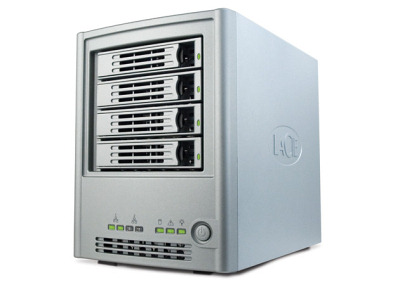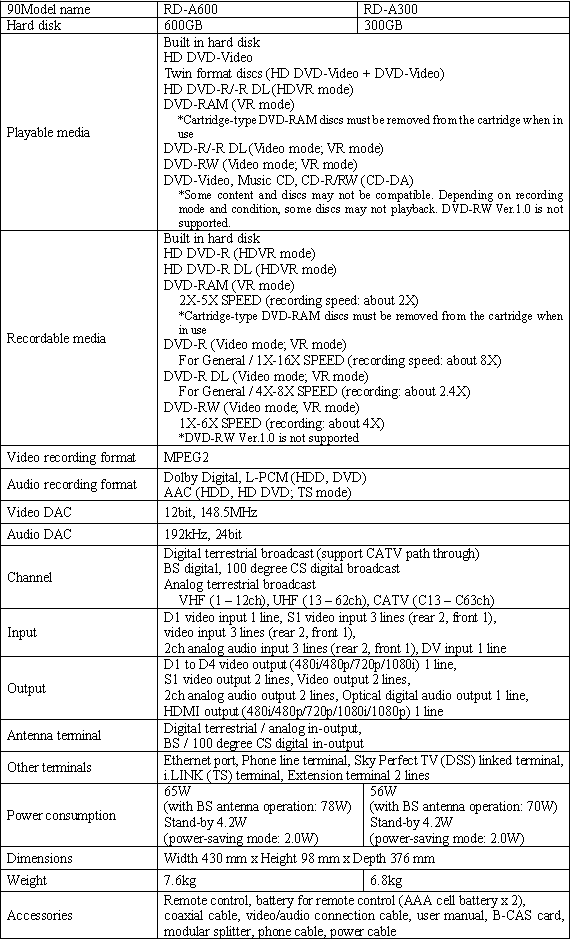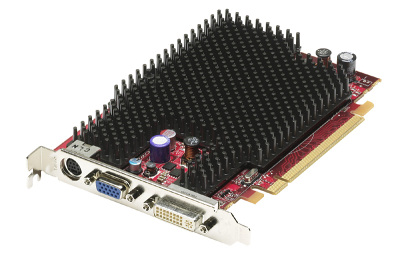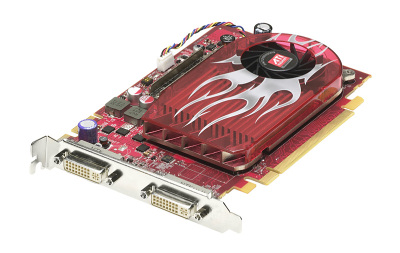 |
||
|
||
| ||
Toshiba Develops New NAND Flash Technology LaCie Delivers 4TB Network RAID For Small Business IT and Workgroups Toshiba Launches New HD DVD Recorders in Japan ATI Radeon 2400 and ATI Radeon 2600 Now Shipping to Board Customers Toshiba Develops New NAND Flash Technology At the VLSI symposium Toshiba Corporation announced a new three dimensional memory cell array structure that enhances cell density and data capacity without relying on advances in process technology, and with minimal increase in the chip die size. In the new structure, pillars of stacked memory elements pass vertically through multi-stacked layers of electrode material and utilize shared peripheral circuits. The innovative design is a potential candidate technology for meeting future demand for higher density NAND flash memory.  Typically, advances in memory density reflect advances in process technology. Toshiba’s new approach is based on innovations in the stacking process. Existing memory stacking technologies simply stack two-dimensional memory array on top of another, repeating the same set of processes. While this achieves increased memory cell density, it makes the manufacturing process longer and more complex. The new array does increase memory cell density, is easier to fabricate, and does not produce much increase in chip area, as peripheral circuits are shared by several silicon pillars. Toshiba’s cutting edge etching technology drives a through-hole down through a stacked substrate, i.e. a multi-layer sandwich of gate electrodes and insulator films. Pillars of silicon lightly doped with impurities are deposited to fill in the holes. The gate electrode wraps around the silicon pillar at even intervals, and a pre-formed nitride film* for data-retention, set in each joint, functions as a NAND cell.  NAND flash memory functions through batch processing of cells, in large numbers of elements connected in series. Toshiba’s new array increases density without increasing chip dimension, as the number of connected elements increases in direct proportion to stack height. For example, a 32-layer stack realizes 10 times the integration of a standard chip formed with the same generation of technology. Toshiba will further develop this elemental technology to the level where it matches current structures in terms of security and reliability. For more images describing the new technology please visit this page. * Toshiba's new method has a SONOS structure-- silicon-oxide-nitride-oxide- silicon --and the electrical charge is held in the silicon-nitride film, which is formed inside gate holes. Traps are formed to lock the electrical charge inside the silicon-nitride film. Source: Toshiba
LaCie Delivers 4TB Network RAID For Small Business IT and Workgroups LaCie announced it has boosted capacity of its Ethernet Disk RAID to 4TB in a single solution. LaCie Ethernet Disk RAID is intended for small business and workgroups. It's powered by a 400MHz Intel 80219 processor and is a complete Windows data backup solution with advanced recovery features such as remote booting. The LaCie Ethernet Disk RAID offers improved security for archived data when configured to RAID 5 + spare thanks to automatic disk rebuilding. It can also be used as an FTP server. For more ease of use, it offers UPnP discovery for automatic recognition on the network. The LaCie Ethernet Disk RAID supports Active Directory by working as a client member in a Windows domain to easily view domain users and groups.  LaCie Ethernet Disk RAID includes full-featured Windows Backup & Recovery Software for automatic incremental backups from localized client machines. If a machine fails, the user can boot into Windows over the network and continue working while their system is being rebuilt. LaCie Ethernet Disk RAID offers a full set of user/group management tools for creating specialized access privileges for each workgroup or user, and an email notification feature will keep them informed of basic activity, backup jobs and critical system errors. LaCie Ethernet Disk RAID includes 4 hot-swappable disks, and 2 x USB 2.0 ports. It’s also equipped with 2 x Gigabit LAN ports for setting up a DHCP server with auto-IP assignment and creating a local Gigabit network. The LaCie Ethernet Disk RAID 4TB is available in June at the suggested retail price of $2,999. The 1TB and 2TB models are currently available as well (see below). Disks ship with all cables necessary for immediate use. Specifications:
Source: LaCie Toshiba Launches New HD DVD Recorders in Japan Toshiba Corporation announced two high-end additions to its VARDIA digital video recorders that support HD DVD capabilities. The new DVR introduce the ability to record two digital HD television programs simultaneously, and also integrate Toshiba's new "VARDIA engine", which offers enhancements to ease of use and performance, including faster drawing of the GUI and improved HD DVD disc operation. The HD DVD VARDIA RD-A600 and HD DVD VARDIA RD-A300 will be rolled out in the Japanese market from the end of June.
The new models offer consumers a choice of hard disk drive capacities: 600GB (RD-A600) and 300GB (RD-A300). Both integrate an HD DVD recordable drive that can directly record HD television programs to an HD DVD-R disc or transfer HD images stored in HDD to an HD DVD-R disc. Like standard DVR, the new recorders allow users to build libraries of their favorite content, whether dramas, movies or sport. The versatility of the new VARDIA DVR extends to playback support for packaged content, including HD DVD, DVD and music CDs. An integrated 1080p compatible up-scaler from Anchor Bay Technologies can up-convert standard definition DVD to an output resolution of 1080p. Both DVR are compliant with the EU RoHS directive on environmentally hazardous substances, which came into force in July 2006. Key specifications:  Source: Toshiba Corporation
ATI Radeon 2400 and ATI Radeon 2600 Now Shipping to Board Customers AMD is now shipping ATI Radeon HD 2400 and ATI Radeon HD 2600 graphics processors in volume to its board customers. Graphics cards based on these processors are expected to be available at online retailers within a few weeks from board customers including Asus, Club 3D, Diamond Multimedia, GeCube, Gigabyte, HIS, MSI, Palit, PowerColor, Sapphire and VisionTek.  Radeon HD 2400 Both graphics processors feature AMD’s UVD (Unified Video Decoder) technology. UVD is a hardware feature that offloads video decoding from the CPU to the GPU to lower system power consumption. This is particularly important for media center PCs (because lower power consumption means quieter cooling solutions) and notebooks (where power consumption dictates battery life). UVD is designed to be used in a range of video applications, for example, watching Blu-ray, HD DVD or standard definition movies.  Radeon HD 2600 AMD also wishes to clarify any confusion that may exist regarding the presence of the Unified Video Decoder (UVD) in its ATI Radeon HD 2000 series graphics processors. UVD is present in the ATI Mobility Radeon HD 2300, the ATI Radeon HD 2400, and the ATI Radeon HD 2600 series products, but is not present in the ATI Radeon HD 2900 series products as it is not needed due to the usage model of this high-end product.  Radeon HD 2600 XT The ATI Radeon HD 2400 and ATI Radeon HD 2600 cards are designed for use in entry-level and mainstream systems, in which the UVD technology is beneficial for watching high definition movies. In contrast, the ATI Radeon HD 2900 XT is a high-end desktop card for gaming enthusiasts, and designed to be used in high-performance PCs. According to the press release, in these environments, the CPU can perform software decoding of HD video without being overburdened and UVD technology is not required. Features of the ATI Radeon HD 2000 series (pay attention to the footnotes):
1 The ATI Mobility Radeon HD 2300 has a fundamentally different architecture to which the term “stream processor” is not equivalently applicable. 2 The ATI Radeon HD 2400, ATI Radeon HD 2600, and ATI Radeon HD 2900 have full support for HDMI and HDCP (including HDCP keys) built into the processor itself; availability in consumer products is determined by the specific solution provider (board partner, PC manufacturer or notebook vendor). The ATI Mobility Radeon HD 2300 can support HDCP and HDMI with additional components. Purchasers of ATI Mobility Radeon HD 2300 products manufactured by third parties should inquire whether the manufacturer has enabled HDMI and/or HDCP in such product. Source: AMD
Write a comment below. No registration needed!
|
Platform · Video · Multimedia · Mobile · Other || About us & Privacy policy · Twitter · Facebook Copyright © Byrds Research & Publishing, Ltd., 1997–2011. All rights reserved. |